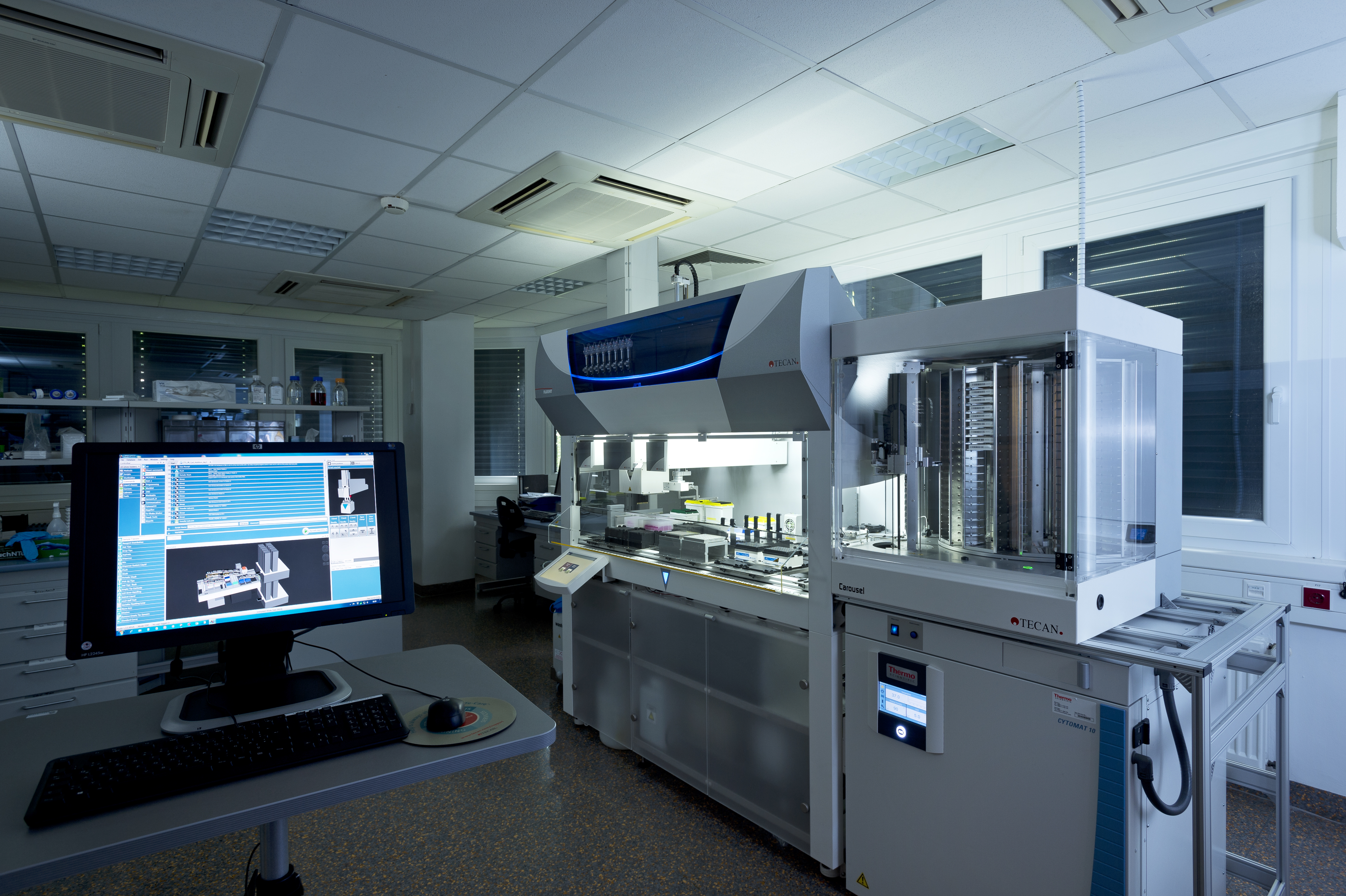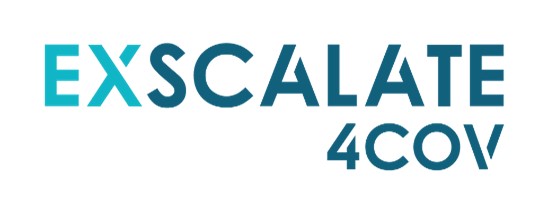Scattolini A, Grammatoglou K, Nikitjuka A, Jirgensons A, Mansilla MC, Windshügel B.
Substrate Analogues Entering the Lipoic Acid Salvage Pathway via Lipoate-Protein Ligase 2 Interfere with Staphylococcus aureus Virulence.
ACS Infect Dis. 2024 Jun 14;10(6):2172-2182.
doi: 10.1021/acsinfecdis.4c00148
Kuzikov M, Reinshagen J, Wycisk K, Corona A, Esposito F, Malune P, Manelfi C, Iaconis D, Beccari A, Tramontano E, Nowotny M, Windshügel B, Gribbon P, Zaliani A.
Drug repurposing screen to identify inhibitors of the RNA polymerase (nsp12) and helicase (nsp13) from SARS-CoV-2 replication and transcription complex.
Virus Res. 2024 May;343:199356
doi: 10.1016/j.virusres.2024.199356
Jalencas X, Berg H, Espeland LO, Sreeramulu S, Kinnen F, Richter C, Georgiou C, Yadrykhinsky V, Specker E, Jaudzems K, Miletić T, Harmel R, Gribbon P, Schwalbe H, Brenk R, Jirgensons A, Zaliani A, Mestres J.
Design, quality and validation of the EU-OPENSCREEN fragment library poised to a high-throughput screening collection.
RSC Med Chem. 2024 Feb 12;15(4):1176-1188
doi: 10.1039/d3md00724c
Schindler M, Siegerist F, Lange T, Simm S, Bach SM, Klawitter M, Gehrig J, Gul S, Endlich N.
A Novel High-Content Screening Assay Identified Belinostat as Protective in a FSGS-Like Zebrafish Model.
J Am Soc Nephrol. 2023 Dec 1;34(12):1977-1990
doi: 10.1681/ASN.0000000000000235
Linciano P, Quotadamo A, Luciani R, Santucci M, Zorn KM, Foil DH, Lane TR, Cordeiro da Silva A, Santarem N, B Moraes C, Freitas-Junior L, Wittig U, Mueller W, Tonelli M, Ferrari S, Venturelli A, Gul S, Kuzikov M, Ellinger B, Reinshagen J, Ekins S, Costi MP.
High-Throughput Phenotypic Screening and Machine Learning Methods Enabled the Selection of Broad-Spectrum Low-Toxicity Antitrypanosomatidic Agents.
J Med Chem. 2023 Nov 23;66(22):15230-15255
doi: 10.1021/acs.jmedchem.3c01322
Haferkamp U, Hartmann C, Abid CL, Brachner A, Höchner A, Gerhartl A, Harwardt B, Leckzik S, Leu J, Metzger M, Nastainczyk-Wulf M, Neuhaus W, Oerter S, Pless O, Rujescu D, Jung M, Appelt-Menzel A.
Human isogenic cells of the neurovascular unit exert transcriptomic cell type-specific effects on a blood-brain barrier in vitro model of late-onset Alzheimer disease.
Fluids Barriers CNS. 2023 Oct 31;20(1):78
doi: 10.1186/s12987-023-00471-y
Szal T, Chauhan SS, Lewe P, Rachad FZ, Madre M, Paunina L, Witt S, Parthasarathi R, Windshügel B.
Efflux Pump-Binding 4(3-Aminocyclobutyl)Pyrimidin-2-Amines Are Colloidal Aggregators.
Biomolecules. 2023 Jun 16;13(6):1000
doi: 10.3390/biom13061000
Zink A, Haferkamp U, Wittich A, Beller M, Pless O, Prigione A.
High-content screening of mitochondrial polarization in neural cells derived from human pluripotent stem cells.
STAR Protoc. 2022 Aug 5;3(3):101602
doi: 10.1016/j.xpro.2022.101602
Chauvistré H, Shannan B, Daignault-Mill SM, Ju RJ, Picard D, Egetemaier S, Váraljai R, Gibhardt CS, Sechi A, Kaschani F, Keminer O, Stehbens SJ, Liu Q, Yin X, Jeyakumar K, Vogel FCE, Krepler C, Rebecca VW, Kubat L, Lueong SS, Forster J, Horn S, Remke M, Ehrmann M, Paschen A, Becker JC, Helfrich I, Rauh D, Kaiser M, Gul S, Herlyn M, Bogeski I, Rodríguez-López JN, Haass NK, Schadendorf D, Roesch A.
Persister state-directed transitioning and vulnerability in melanoma.
Nat Commun. 2022 Jun 1;13(1):3055
doi: 10.1038/s41467-022-30641-9
Krasemann S, Haferkamp U, Pfefferle S, Woo MS, Heinrich F, Schweizer M, Appelt-Menzel A, Cubukova A, Barenberg J, Leu J, Hartmann K, Thies E, Littau JL, Sepulveda-Falla D, Zhang L, Ton K, Liang Y, Matschke J, Ricklefs F, Sauvigny T, Sperhake J, Fitzek A, Gerhartl A, Brachner A, Geiger N, König EM, Bodem J, Franzenburg S, Franke A, Moese S, Müller FJ, Geisslinger G, Claussen C, Kannt A, Zaliani A, Gribbon P, Ondruschka B, Neuhaus W, Friese MA, Glatzel M, Pless O.
The blood-brain barrier is dysregulated in COVID-19 and serves as a CNS entry route for SARS-CoV-2.
Stem Cell Reports. 2022 Feb 8;17(2):307-320
doi: 10.1016/j.stemcr.2021.12.011
 Fraunhofer Institute for Translational Medicine and Pharmacology ITMP
Fraunhofer Institute for Translational Medicine and Pharmacology ITMP 


